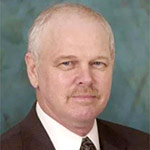The Santa Fe River flows east to west in north Florida, terminating as a tributary to the Suwanee river, which in turn empties into the Gulf of Mexico. A tributary to the Santa Fe is the Ichtucknee River.
The Ichtucknee is one of the few remaining jewels in the Florida ecosystem. It originates in Ichtucknee spring from which its crystal clear water flows six miles south to a confluence with the Santa Fe.
For several years we owned property on the Santa Fe about a mile east of that confluence, from which we would kayak up the Ichtucknee to the spring then ride the current back down.
The northern third of the Ichtucknee river flows through a state park providing views of undisturbed natural Florida woodlands. The southern third flows through a rural residential area where the flood plain requires the homes be set back considerably from the river edge, so it’s still a natural appearing environment.
The middle third, however, though still surrounded by the state park, isn’t as tranquil. This middle third, and how it relates to Bill Hudson’s recent series about the Dry Gulch reservoir tract, is the topic of this column.
Last week Mr. Hudson’s series described the debate about possible uses of the 21 acres of the Dry Gulch Resevoir land located on the San Juan River. The last part of that series concluded with PAWSD Board President Jim Smith making the following proposal, “I move that dedicate that 21 acres for our PAWSD employees, for housing …”
Mr. Hudson reports that the motion was approved unanimously.
That proposal is the proverbial ‘no-brainer’ of a good idea — which is probably how I thought of it a few years back, when I wrote this about the Dry Gulch reservoir fiasco:
I have a humble suggestion. Build affordable housing on the tract! You could build rental housing earmarked for the entire town and county workforce (plus long-term employees of local businesses) for a small fraction of the $357 million dollar projected cost of the reservoir.
There is already a county maintenance staff in place to maintain the housing. In fact, you could offer reduced rents to maintenance workers who agreed to handle emergency issues when they occur. Then invite bids from local property managers to administer the rentals.
I don’t flatter myself the Mr. Smith got the idea for his motion from what I wrote in 2020. It’s an idea that anyone with common sense would think of.
From what I gathered from Mr. Hudson’s series last week, the alternative usage of that riverfront parcel would be a boating ‘put-in’ location — which would benefit only rafting and tubing businesses. That benefit would be seasonal, since there isn’t a lot of river tubing during the winter.
How dedicating that parcel to a seasonal ‘put-in’ is preferable to helping solve the workforce-housing situation eludes me. It apparently also eluded the PAWSD Board who instead opted for housing.
Does Pagosa even need more tubers on the San Juan river? Last time I was there in the summer, there seemed to be plenty of them.
Which brings me to where this column started — the Ichtucknee river in Florida. Particularly the middle stretch which is the only part where tubing is allowed.
There got to be so many tubers on that river, the park officials had to limit the number allowed.
I’ll describe the crowds from personal experience of having to kayak through them — even after the limit was imposed.
Like all rivers on the flat Florida peninsula the Ichtucknee is slow moving. That makes for congestion of tubers.
It was impossible to pass through them without physically contacting tubes. You had to wedge the kayak in between them, some of whom objected to moving. Groups would congregate, sometimes lashing tubes together making it impossible to pass between them.
That was just the physical impediment to enjoying the river. Yelling seemed to be the preferred way of communicating — accompanied by the screeching of teen girls as teen boys engaged in the mating ritual of flipping the girls from their tubes.
Even though no alcohol was allowed, beer drinking was obvious. That resulted in alcohol-induced grab-assery among the males, with a couple of near misses from my kayak.
How much of such antics — with the attendant vulgarity around children tubers — do the folks in Pagosa want floating down the river through town? Does anyone believe using the Dry Gulch tract as a boating ‘put-in’ wouldn’t increase that number?
Who would benefit from that — other than the rafting/tubing companies?
So you can make them happy.
Or you can use that tract for affordable housing which benefits everyone in town. Mr Smith and the PAWSD Board made the common sense choice.

